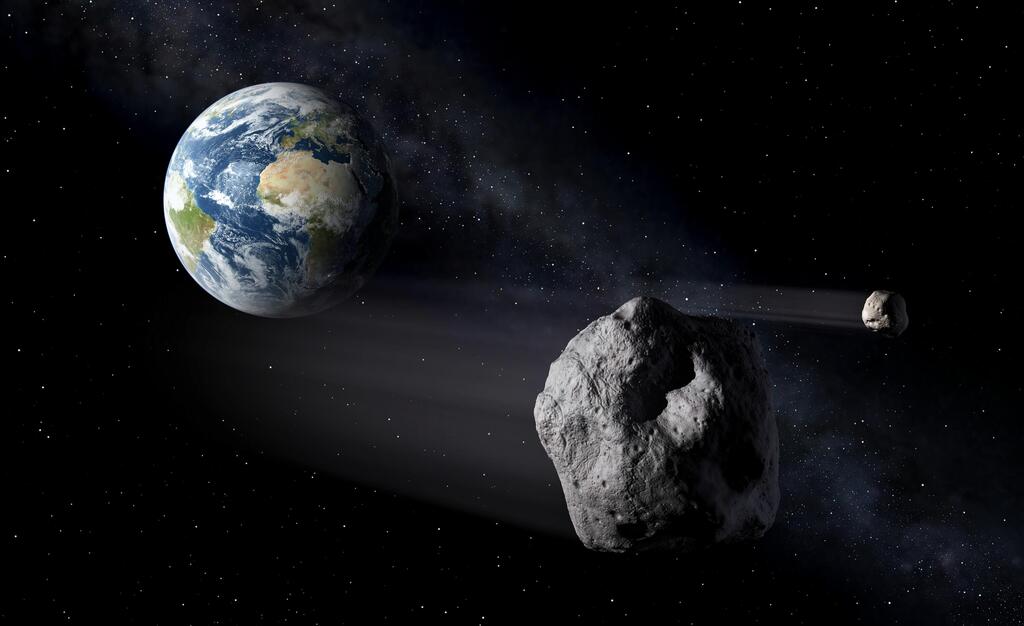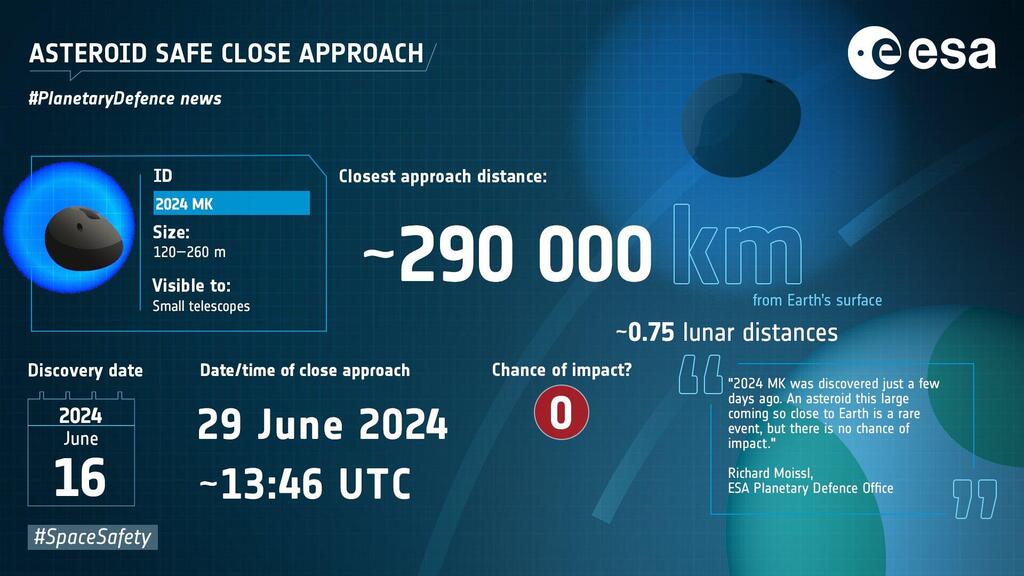Getting your Trinity Audio player ready...
Timed perfectly for Asteroid Day on June 30, two asteroids are set to pass close to Earth within a span of just 42 hours, both maintaining safe distances and posing no risk of impact.
The first asteroid, designated 2024 MK, was only discovered on June 16 and is estimated to be between 394 and 853 feet in length. It will make its close approach to Earth on June 29, just a day before International Asteroid Day.
Compared to other Near-Earth Objects (NEOs)—asteroids and comets that come relatively close to our planet—2024 MK is considered relatively large. It will pass at a safe distance of 180,000 miles from Earth, approximately 75% of the distance between Earth and the Moon. Although an asteroid of this size could cause significant damage if it were to impact Earth, there is no danger of such an event occurring. However, its recent discovery underscores the ongoing need to enhance detection and monitoring capabilities for potentially hazardous NEOs.
Due to its size and proximity, 2024 MK will be visible in the night sky using a small telescope or advanced binoculars. In contrast, asteroid 2011 UL21 (415029) is the larger of the two, with an estimated diameter of about 1.4 miles, making it larger than 99% of all NEOs. It is important to note that this asteroid, traveling at a speed of about 36,000 mph, will pass by tomorrow (Thursday, June 27) at a distance of 4.1 million miles from Earth—a very safe distance with no risk of collision.
The orbit of this asteroid around the Sun is tilted and inclined, an unusual finding for such a large object, likely resulting from gravitational interactions with a massive planet like Jupiter, which can deflect asteroids considered to have safe orbits. It completes 11 orbits around the Sun in nearly the same period that Earth completes 34 orbits (34 years).
Impact craters on Earth serve as evidence of asteroids' influence on its history and development. International Asteroid Day, celebrated annually on June 30, commemorates the most significant asteroid-related event in recorded history—the Tunguska event that occurred in the Siberian taiga forest on June 30, 1908.
The global annual event aims to raise awareness of the issue while developing Earth's defense capabilities against asteroids. For example, the European Space Agency (ESA) works in collaboration with and the support of its member states to maximize the ability to understand and respond to asteroid hazards in Europe and participate in broader planetary defense efforts of humanity.
Over the past two decades, the ESA has conducted detection and analysis of NEOs that could cause significant damage due to their size. The ESA's Planetary Defense Office has conducted several projects, the most notable being the Hera mission, set to launch in October this year as part of the world's first asteroid deflection experiment.
In September 2022, NASA successfully collided its DART spacecraft with Dimorphos, a small asteroid about 525 feet in diameter (the size of the Great Pyramid of Giza), which is the moon of Didymos, approximately 2,559 feet in diameter. Together, the two form a binary asteroid system located over 7 million miles from Earth. Hera is expected to arrive there in 2026 to gather vital information that cannot be collected from Earth—about the mass and surface of the asteroid, including details about the crater created by DART.
The planetary defense mission aims to test whether deflecting asteroids from their path through collision is possible, in case an asteroid poses a threat to Earth. Simultaneously, the ESA is developing a network of telescopes called Flyeye, inspired by insect eyes, for automatic scanning of the night sky in search of potentially hazardous new asteroids. Additionally, the NEOMIR space telescope is planned to be positioned between Earth and the Sun to detect asteroids near Earth using infrared light from areas not visible from the ground due to the Sun's blinding light.



